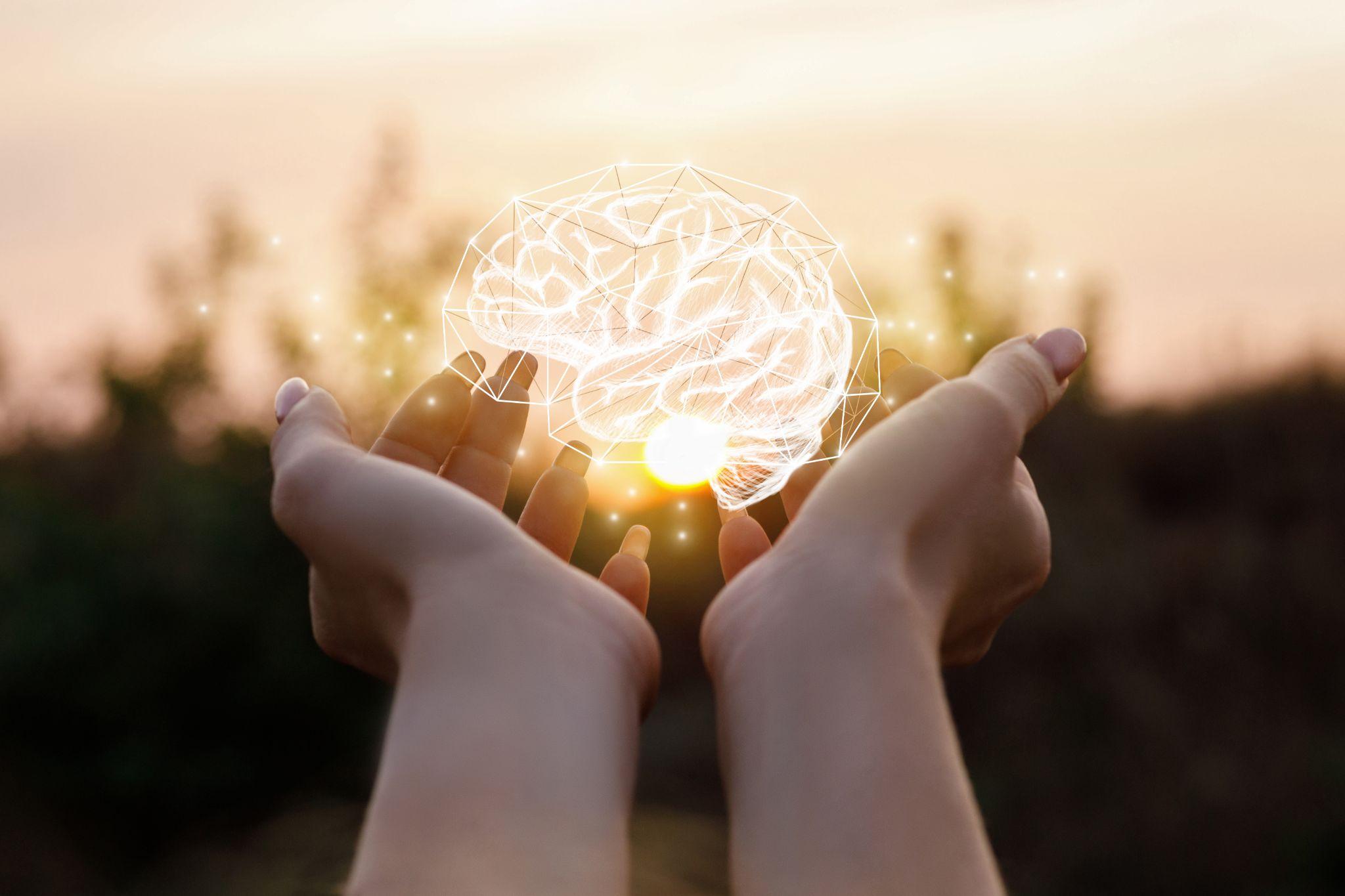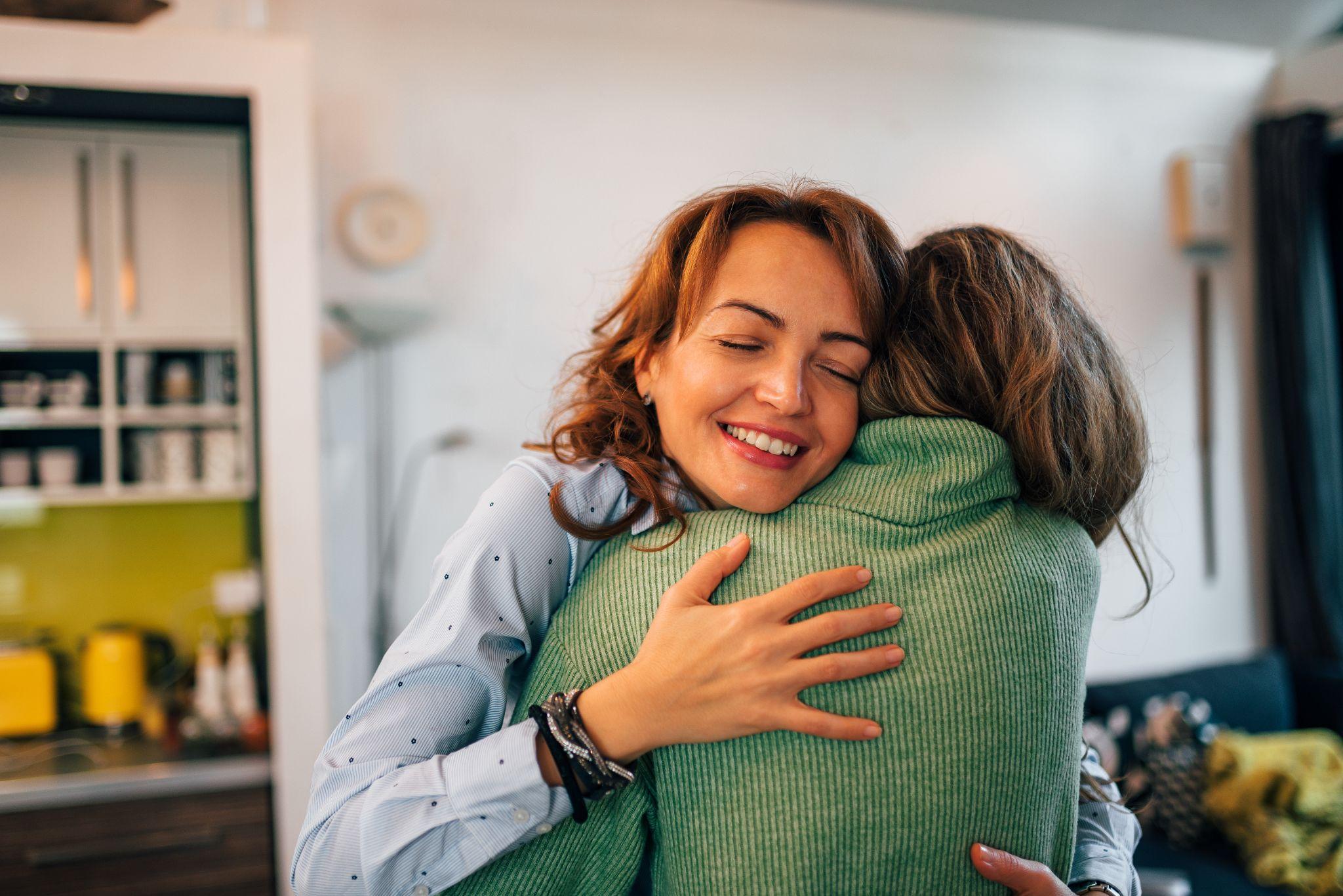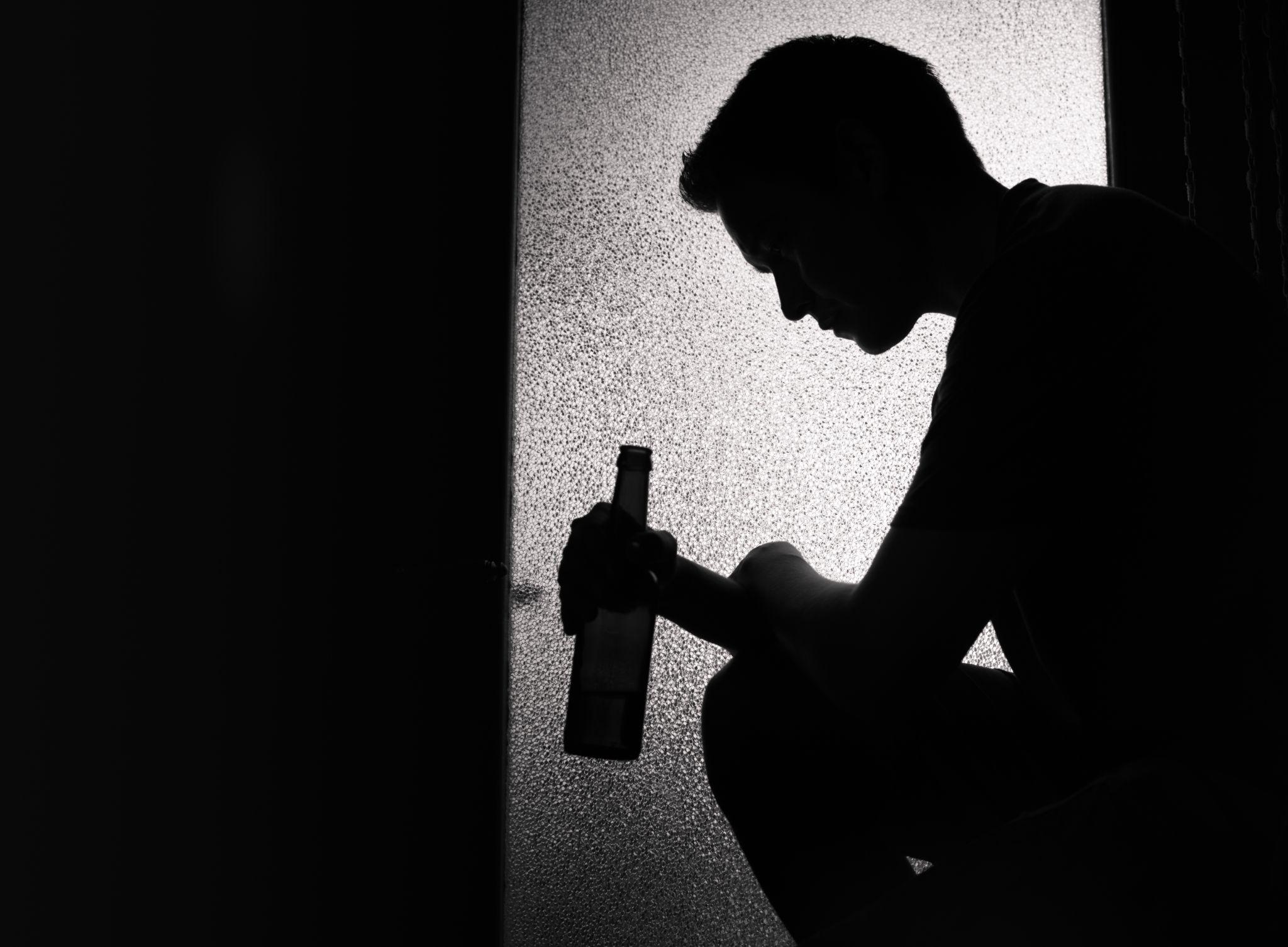
Our Addiction Resources
Navigating the world of addiction and recovery can be overwhelming. We’re here to provide clear, compassionate education and guidance. From practical advice for maintaining sobriety to informational guidance on the long-term effects of substance abuse, our content is a beacon of hope and understanding.
Our Team is Ready are ready to take your call
Call us Today!
or we can call you. Fill out form below
Our Blog

Types of Addiction
Addiction affects millions globally and is a serious condition that involves both the mind and body. It often leads to a compulsive need to engage in activities or use substances despite knowing the harm they can cause.
At Lumina Recovery, we want to shed light on the various forms of addiction, how to spot them, and the available treatments, offering hope and guidance for those affected.
Physical Addiction
Physical addiction is a complex and often misunderstood aspect of addiction. It’s not just about a substance use disorder; it’s a physiological dependence that develops over time.
When someone is physically addicted, their body has adapted to the presence of a substance to the point where its absence causes severe physical and psychological distress.
This type of addiction can have significant impacts on both the brain and body, altering everything from mood to basic bodily functions.
Common Types of Substances Linked to Physical Addiction
- Alcohol
- Nicotine
- Opioids (like prescription painkillers and heroin)
- Cocaine
- Methamphetamine
The Science Behind Physical Addiction
Brain Chemistry: Substances like opioids, alcohol, and nicotine alter the brain’s reward system. They increase the release of dopamine, a neurotransmitter associated with pleasure and satisfaction. Over time, the brain begins to rely on the substance to trigger these feelings.1
Physical Dependence: With regular use, the body adjusts its own functioning to accommodate the substance. Eventually, the substance becomes necessary for the body to feel ‘normal.’
Tolerance Development: The body becomes increasingly resistant to the effects of the substance. This means that higher doses are needed to achieve the same effect, further deepening the addiction.1
How Physical Addiction Manifests
Withdrawal Symptoms: When the body doesn’t receive the substance it’s dependent on, it reacts with withdrawal symptoms. These can range from mild discomfort to life-threatening conditions, depending on the substance and the level of addiction.1
Cravings: Intense, often overwhelming desires for the substance are a hallmark of physical addiction. These cravings can overpower an individual’s ability to focus on other aspects of their life.
Recognizing Physical Addiction
Behavioral Changes: Look for changes in behavior, such as increased secrecy, changes in social circles, or neglecting responsibilities.
Physical Signs: Noticeable weight loss or gain, changes in sleeping patterns, and deteriorating physical appearance can be indicators of physical addiction.
In understanding physical substance addiction, it’s crucial to recognize that it’s a medical condition requiring professional treatment. It’s not a choice or a moral failing. With the right support and treatment, recovery and a return to health are possible.
Behavioral Addiction
Behavioral addiction, often less visible than physical addiction, is a compelling and complex condition. It revolves around the compulsive need to engage in certain activities that provide a sense of reward or escape, despite the negative consequences these behaviors may have on a person’s life.
Unlike physical addiction, which is driven by the use of substances, behavioral addiction includes characteristics of uncontrollable urges to perform certain actions, ranging from gambling to excessive internet use.2
Common Behavioral Addictions
- Gambling
- Shopping addiction
- Work addiction
- Video gaming or internet addiction
- Sex addiction
- Eating disorders (like binge eating)
The Psychology of Behavioral Addiction
Brain Reward System: Just like substance abuse, behavioral addictions activate the brain’s reward pathways. Engaging in these behaviors leads to the release of dopamine, creating a sense of pleasure or euphoria.2
Emotional Triggers: Often, these behaviors are a response to emotional triggers such as stress, anxiety, depression, or other mental health disorders. The activity becomes a coping mechanism, providing temporary relief or escape.
Habit Formation: Over time, these activities become habitual. The brain starts associating them with relief or reward, making it increasingly difficult to resist the urge to engage in them.
The Path to Behavioral Addiction
Starting Point: It often begins as an innocent activity for pleasure or stress relief.
Compulsion: Gradually, you feel an irresistible urge to continue the behavior.
Reinforcement: The behavior brings temporary satisfaction, encouraging its repetition.
Understanding the Impact
Life Disruption: Behavioral addictions can significantly disrupt daily life, affecting relationships, work, and overall well-being.
Hidden Nature: Unlike physical addictions, behavioral addictions are often hidden and can go unnoticed for a long time. This can delay the seeking of help and treatment.
Social and Emotional Consequences: These addictions can lead to social isolation, feelings of guilt or shame, and can exacerbate underlying mental health issues.
Behavioral addiction is a serious issue that requires a nuanced understanding. It’s not just about lacking willpower or being irresponsible.
It’s a complex interplay of psychological factors that drive an individual to seek solace in harmful patterns of behavior. Recognizing the signs and seeking appropriate help is crucial for recovery and regaining a balanced, healthy life.2
Signs of Addiction
Identifying addiction early can make a big difference in treatment effectiveness. Addiction, whether behavioral or physical, typically follows a recognizable pattern.
Physical Signs
- Noticeable changes in how you look or take care of yourself
- Problems with sleeping patterns
- Health issues without a clear cause
Behavioral Signs
- Being secretive or pulling away from friends and family
- Ignoring work, school, or home responsibilities
- Dangerous actions to support the addiction
- Legal or financial troubles due to addictive behaviors
Psychological Signs
- Unexpected mood changes
- Getting defensive about your addictive behavior
- Denying there’s a problem
- Losing interest in things you once enjoyed
Social Signs
- Hanging out with a new crowd that encourages your addiction
- Avoiding social activities or family gatherings
- Frequent arguments with loved ones about your addiction
Key Components of Addiction Treatment

Treating addiction is not one-size-fits-all. It should be personalized, combining medical care, psychological support, and other interventions.
Medically Supervised Detox
This approach is crucial for safely managing withdrawal symptoms under professional care, particularly for physical addictions where cessation can lead to severe physical reactions.
Medication-Assisted Treatment (MAT)
MAT is primarily used to ease withdrawal symptoms in physical addiction and can also be used to treat co-occurring mental health issues, which are often linked with substance abuse.
Inpatient and Outpatient Programs
These programs offer flexibility in treatment. Inpatient care is intensive and suited for severe cases, often of physical addiction, while outpatient programs allow individuals to receive treatment while living at home or in a dedicated facility, beneficial for both physical and behavioral addictions.
Therapy (Individual, Group, and Family)
Therapy, such as cognitive behavioral therapy (CBT), tackles the root causes of addiction. It’s effective in addressing the psychological and emotional aspects of both physical and behavioral addictions.
Mindfulness and Meditation
These techniques help reduce stress and improve focus, aiding in the management of triggers and cravings associated with both types of addiction.
Physical Wellness (Exercise and Healthy Eating)
Regular exercise and a healthy diet are fundamental in supporting the recovery process. They improve overall health, which is beneficial for those recovering from any form of addiction.
Aftercare and Relapse Prevention
This aspect includes ongoing support groups and education to maintain sobriety. It’s crucial in providing continued support and resources to prevent relapse in both physical and behavioral addiction.
Overcoming Addiction With Lumina Recovery
Addiction is serious but can be overcome with the right support and treatment. Recognizing the signs and seeking help are vital first steps.
Recovery is definitely possible, and with dedication and the right resources, a fulfilling life beyond addiction awaits. Lumina Recovery offers detox programs, dual diagnosis treatment, and specialized therapy for those struggling with drugs or alcohol.
Don’t hesitate to reach out to our team of healthcare professionals and addiction specialists for addiction support.
Sources:

The Brain Disease Model of Addiction
Addiction is often shrouded in misconceptions and stigma, but advances in science and psychology have paved the way for a more comprehensive understanding.
The brain disease model of addiction identifies addiction as a chronic and relapsing disorder marked by persistent and compulsive drug seeking behavior, ongoing usage despite its detrimental effects, and enduring alteration in brain function.
Below we will explain this complex model, fostering a clearer understanding of addiction and its impact on the brain.
1. What is the brain disease model of addiction?
The brain disease model of addiction views addiction as a chronic disease that alters the brain both structurally and functionally. This model emphasizes that these changes in the brain are fundamental in developing and sustaining addiction.1
It’s based on extensive research showing that long-term substance abuse significantly impacts areas of the brain involved in reward, motivation, learning, and decision-making. These changes explain why individuals with addiction continue to seek and use substances despite adverse consequences.1
This model also underscores the role of genetics, environment, and personal history in the development of addiction. For instance, genetics can influence how susceptible a person is to addiction, while environmental factors like exposure to drugs at a young age or stressful life events can trigger or exacerbate the condition.1
Understanding drug addiction as a brain disease helps in developing more effective evidence-based treatment strategies. It moves the focus from blame and punishment to medical treatment and rehabilitation, acknowledging that recovery involves restoring healthy brain function and developing coping mechanisms.
2. How does addiction change the brain?
Addiction can profoundly impact the brain, leading to both structural and functional changes. These alterations are especially pronounced in areas involved in reward, motivation, and memory.
Altered Reward System: Drugs and alcohol create an intense activation of the brain’s reward system, far more than natural rewards like food or social interactions.1
This overstimulation leads to the “high” associated with drug use. Repeated exposure alters the reward circuit, making it hypersensitive to the substance while diminishing response to other rewards.
Impaired Executive Function: The prefrontal cortex, crucial for decision-making, impulse control, and judgment, is significantly affected by addiction. This impairment leads to increased impulsivity and poor decision-making, making it harder for individuals to resist the urge to use substances.1
Changes in Learning and Memory: The hippocampus and amygdala play roles in forming and storing memories associated with substance use. This can lead to strong conditioned responses to cues associated with drug use, making relapse more likely.1
Neurotransmitter Imbalance: The National Institute on Drug Abuse explains that drugs can disrupt neurotransmitters like dopamine and serotonin, leading to imbalances that affect mood, behavior, and thought processes.2
Over time, the brain’s chemistry and circuitry adjust to the presence of drugs, making it challenging to feel pleasure or maintain mood stability without them.2
The changes in the brain due to addiction can be long-lasting, but they are not always permanent. With proper treatment and support, the brain can recover, regaining healthier functioning over time.
3. Is addiction a choice or a disease?
Understanding addiction as either a choice or a disease is key to how we approach treatment and support for individuals struggling with substance use.
Initially, the choice to use substances is often voluntary. However, as addiction develops, changes in brain chemistry and functioning significantly reduce a person’s ability to choose not to use substances.
Biological Factors: Genetics can play a significant role in an individual’s susceptibility to addiction. Research indicates that genetic factors account for about 40-60% of the risk for addiction.3
Neurological Changes: The brain disease model of addiction shows that substance use disorder leads to alterations in brain regions responsible for decision-making, impulse control, and judgment.2
These changes can diminish an individual’s ability to resist the urge to use substances, making addiction a matter of impaired brain function rather than just poor choices.
Psychological Factors: Mental health disorders, trauma, and chronic stress can all influence the likelihood of developing an addiction. These conditions can affect brain function and structure, making individuals more susceptible to the lure of substance use as a coping mechanism.1
Social and Environmental Factors: Factors such as family environment, peer influence, socioeconomic status, and exposure to trauma can significantly impact an individual’s likelihood of developing an addiction.
Recognizing addiction as a disease rather than a moral failing or a simple choice encourages more compassionate and effective approaches to treatment and reduces stigma, which can be a barrier to seeking help.
4. Does the brain recover after addiction?

The brain’s capacity to heal and rewire itself after addiction is remarkable, but this recovery is often a gradual process and can vary from person to person.
Neuroplasticity: The brain’s neuroplasticity allows it to adapt and change throughout life. This means that with time and appropriate treatment, the brain can form new neural pathways, regaining healthier functioning that was impaired by addiction.3
Recovery Timeline: The timeline for brain recovery can depend on several factors, including the length and severity of addiction, the type of addictive substances used, and the individual’s overall health.
Some changes, especially those related to decision-making and impulse control, can begin to reverse relatively quickly. Other changes, particularly those affecting the brain’s reward system, may take longer.
Healthy Lifestyle Contributions: Engaging in healthy behaviors can facilitate brain recovery. Regular physical exercise, a balanced diet, sufficient sleep, stress management, and engaging in mentally stimulating activities can all support brain healing.
Ongoing Treatment: Continuous engagement in treatment and recovery activities is crucial. This can include therapy, support groups, and, in some cases, medication-assisted treatment to help manage cravings and reduce the risk of relapse.
The Role of Social Support: Positive social interactions and support can enhance brain recovery. Being part of a supportive community can provide emotional benefits and encourage healthy lifestyle choices, which are essential for brain healing.
5. How can we support someone with addiction?
Supporting someone with addiction is a multifaceted process, requiring empathy, understanding, and patience.
Educate Yourself: Understanding the brain disease model of addiction helps in recognizing that addiction is a complex disease, not a choice or moral failing. This knowledge can foster a more compassionate and supportive approach.
Offer Emotional Support: Listen without judgment and offer encouragement. Let them know you care about their well-being and are there to support their recovery journey.
Encourage Professional Help: Gently encourage them to seek professional treatment. Offer to help them find treatment options and support them through the process of getting help.
Be Patient: Recovery is a long and non-linear process. There will be challenges and possibly relapses. Patience and understanding are crucial during these times.
Take Care of Yourself: Supporting someone with an addiction can be emotionally taxing. Ensure you’re taking care of your own mental and emotional health, and seek support if needed.
Stay Informed and Involved: Stay informed about the recovery process and be involved as appropriate. Attend support groups for families and friends of those with addiction to better understand how you can help.
Learn More About the Brain Disease Model of Addiction with Lumina Recovery
Understanding addiction as a specific brain disease requires shifting perspectives and recognizing the complexity of various factors that contribute to addiction.
At Lumina Recovery, we believe in providing compassionate, evidence-based care that addresses the unique needs of each individual through specialized programs, therapy, and dual diagnosis treatment.
By embracing the brain disease model of addiction, we foster a more empathetic and effective approach to treatment and recovery. Contact us today to learn more about how you can support yourself or a loved one through addiction.
Sources:

Relapse Prevention Guide for Addiction
At Lumina Recovery, we understand that the journey towards lasting sobriety from drugs and alcohol is challenging and marked by the constant threat of relapse. A relapse isn’t just a single event but a process, and recognizing its early signs can be crucial in maintaining long-term recovery.
This guide is designed to provide practical strategies and insights to help individuals in recovery, as well as their loved ones, understand and prevent relapse. By fostering awareness and preparedness, we aim to support you in your ongoing journey towards a healthier, substance-free life.
Understanding Relapse
Relapse in the context of recovery from substance use disorders is a concept often surrounded by misunderstanding. It is not an abrupt event, but rather a gradual process that can be identified and managed with appropriate knowledge and strategies.
To deepen our understanding of relapse, it’s crucial to recognize its stages and learn how to effectively respond.
The Stages of Relapse
The process of relapse typically unfolds in three distinct stages: emotional, mental, and physical.1
The emotional relapse stage is the first, characterized by symptoms such as anxiety, anger, defensiveness, and mood swings. Individuals may begin to isolate themselves and neglect their self-care routines during this phase. Prevention at this stage focuses on recognizing these early emotional cues, engaging in stress-reducing activities, openly discussing feelings, and maintaining a healthy lifestyle.
As the process progresses, individuals enter the mental relapse stage. This phase is marked by an internal conflict where part of the person wants to use substances, while another part wants to continue recovery.
Symptoms at this stage include reminiscing about past substance use, lying, spending time with old friends who use substances, fantasizing about using, and planning a relapse. Preventing mental relapse involves sharing these thoughts with a trusted individual, practicing mindfulness to stay present, and reminding oneself of the negative consequences of substance use and the benefits of sobriety.
The final stage is physical relapse, which is the act of substance use or returning to addictive behaviors. It’s most effective to intercept a relapse during the emotional and mental stages, as it becomes significantly more challenging to stop the process once it has progressed to the physical stage.
The Relapse Process
Acknowledging that relapse is a process rather than a singular event is critical. Warning signs of relapse often start weeks or months before the actual physical relapse. The early warning signs are subtle, typically involving changes in emotions, thoughts, and behaviors.
The Role of Triggers in Relapse
Relapse triggers play a significant role in the relapse process. Emotional triggers like stress, anxiety, depression, frustration, or boredom can initiate the process. Developing healthy coping mechanisms like exercise, relaxation techniques, or engaging in hobbies can help mitigate these triggers.
Environmental triggers, such as certain people, places, events, smells, or songs associated with past substance use, can also prompt cravings. Avoiding these triggers when possible and developing coping strategies for unavoidable situations is essential.
Physical pain or discomfort can be a trigger, especially for those with a history of painkiller addiction. It’s important to seek medical advice while being transparent about past substance use and to use non-addictive pain management strategies.
Social triggers, including situations where substance use is prevalent and peer pressure, can pose challenges. Developing a plan for these situations, such as having an accountability partner, practicing refusal skills, or leaving the situation if necessary, is a key strategy.
5 Strategies for Relapse Prevention

In the journey of recovery, having an effective set of strategies for a relapse prevention plan is essential. These five strategies not only help in navigating the challenges of staying sober but also contribute to a more fulfilling life post-recovery.
1. Developing a Strong Support System
Central to relapse prevention is the establishment of a strong support system. This involves staying connected with support groups and regularly attending therapy sessions. These groups provide a sense of community and understanding, offering both accountability and encouragement.
Additionally, it’s important to surround oneself with individuals who support your recovery journey. These might include family members, friends, or peers from support groups who understand the challenges of addiction and can offer positive reinforcement and guidance.
2. Establishing Healthy Routines
Creating and maintaining healthy routines is another key strategy. Prioritizing self-care is essential; this includes activities that promote physical and mental well-being, such as exercise, meditation, adequate sleep, and pursuing hobbies and interests that bring joy and satisfaction.
A structured daily schedule is equally important. It helps in keeping individuals engaged, focused, and less likely to encounter idle time which can lead to cravings or thoughts of substance use.
3. Managing Stress Effectively
Learning to manage stress effectively is vital in relapse prevention. Techniques like mindfulness and meditation can be powerful tools in staying grounded and present, reducing the likelihood of turning to substances as a coping mechanism.
Developing a set of healthy coping skills, such as journaling, engaging in physical activity, or talking to a trusted friend or therapist, can provide alternative ways to handle stress and negative emotions.
4. Shifting Attention to Mental Health
Regularly checking in with a mental health professional is important, especially during challenging times. This ensures that any underlying mental health conditions are appropriately managed and don’t contribute to the risk of relapse. Being aware of and proactive about mental health is an integral part of a successful recovery journey.
5. Continuing Personal Growth and Understanding
A deep understanding of one’s self and past experiences with substance use is important. Reflecting on what led to substance use in the past can provide insights that help in avoiding similar situations in the future.
Engaging in personal development activities also plays a significant role. This might include reading, taking courses, or other activities that foster personal growth, self-understanding, and the development of new perspectives and coping strategies.
Understand Relapse Prevention with Lumina Recovery
Relapse prevention is not just about avoiding substance abuse; it’s about building a life where the desire to use substances loses its power. At Lumina Recovery, we believe in empowering you with the tools and knowledge through therapy, specialized programs, and other treatment programs to navigate your recovery journey confidently.
Remember, every day is a new opportunity to strengthen your commitment to sobriety and well-being. Stay strong, stay informed, and know that you’re not alone in this journey. Contact us today to learn more about relapse prevention.
Source:

Does Alcohol Cause Anxiety?
Yes, alcohol can cause anxiety. While many people turn to alcohol as a way to relax, its effects on the brain and body can actually lead to increased anxiety over time. The temporary calming sensation alcohol provides is short-lived, and as it wears off, it can trigger feelings of nervousness, unease, and even panic.
Approximately 20% of Americans with an anxiety or mood disorder also have an alcohol or substance use disorder. Likewise, about 20% of those with an alcohol or substance use disorder also struggle with an anxiety or mood disorder.1
For those who already struggle with anxiety, alcohol can worsen symptoms, create dependence, and interfere with mental health. Understanding the relationship between alcohol and anxiety is essential to making informed decisions about drinking habits and overall well-being.
What Is Anxiety?
Anxiety is a natural response to stress, characterized by feelings of worry, fear, or nervousness. While occasional anxiety is normal, persistent or excessive anxiety can be a sign of an anxiety disorder.
Symptoms may include restlessness, rapid heartbeat, difficulty concentrating, and trouble sleeping. Anxiety disorders can be triggered by genetics, environmental factors, and lifestyle choices—including alcohol consumption.
Can Alcohol Cause Anxiety?
Yes, alcohol can cause anxiety and contribute to the development of anxiety disorders in several ways:1
- Alters brain chemistry. Alcohol affects neurotransmitters like GABA and serotonin, which regulate mood. Disrupting these chemicals can lead to heightened anxiety from alcohol
- Triggers withdrawal symptoms. After alcohol leaves the system, the body may experience withdrawal effects, including alcohol-induced anxiety, restlessness, and irritability
- Disrupts sleep patterns. Poor sleep caused by alcohol can contribute to increased anxiety levels the next day.
- Causes “hangxiety.” Some people experience significant alcohol anxiety after drinking, commonly referred to as “hangxiety,” which results from alcohol withdrawal and dehydration.
While alcohol may provide short-term relief from stress or anxiety, over time, it can actually make these feelings worse, leading to a cycle of dependence and worsening mental health.
The Genetic Factor in Anxiety Caused by Alcohol
Alcohol addiction and genetics play a significant role in both anxiety disorders and alcohol dependence. If you have a family history of anxiety or alcohol use disorder, you may be at a higher risk of experiencing both conditions.
Life challenges can also contribute to generalized anxiety disorders and alcohol dependence. If you face difficult or upsetting events, like losing someone close to you or going through a big change, you might feel stressed or anxious.
Sometimes, to handle these challenging times, people might start drinking alcohol as a coping mechanism. It may seem like a quick fix to feel better, but it can quickly turn into a drinking habit. Before you know it, you might start needing alcohol to feel okay, and that can make your anxiety worse.
The Danger of Using Alcohol to Treat Anxiety
Many people use alcohol as a coping mechanism for anxiety, but this approach can be dangerous. Alcohol can temporarily mask anxious feelings, but as the effects wear off, anxiety often returns—sometimes more intensely.
Over time, individuals may feel the need to drink more frequently or in larger amounts to manage their anxiety, increasing the risk of alcohol dependence and long-term mental health issues.
Furthermore, alcohol can interfere with anxiety treatments, such as medication and therapy, making it harder to achieve lasting relief. If anxiety is a persistent issue, seeking professional treatment is a safer and more effective approach than self-medicating with alcohol.
Does Anxiety Go Away When You Quit Drinking?
For many people, reducing or quitting alcohol can lead to significant improvements in anxiety. However, the timeline for improvement varies:
- Short-term: You may experience withdrawal-related anxiety for a few days to weeks after quitting.
- Long-term: Over time, without alcohol interfering with brain chemistry, anxiety levels can stabilize, and many people notice a decrease in symptoms.

Other Mental Health Problems Caused by Alcohol
Beyond anxiety, alcohol use can contribute to a range of mental health issues, including:
- Depression: Alcohol can worsen depressive symptoms and increase the risk of suicidal thoughts.
- Panic Attacks: Drinking and anxiety are linked, and alcohol can trigger panic attacks, especially in those prone to panic disorders.
- Mood Swings: Alcohol disrupts emotional regulation, leading to unpredictable mood swings and changes.
- Memory and Cognitive Issues: Chronic alcohol use can impair memory, focus, and decision-making abilities.
If you’re struggling with anxiety and drinking-related mental health concerns, professional treatment can provide the necessary support to regain balance and well-being.
The Importance of Seeking Professional Help
Getting help from a professional is an important step in dealing with anxiety and alcohol use disorders. These issues can be complicated and hard to handle on your own. Mental health experts can figure out if you have anxiety, an alcohol problem, or both.
Therapists and counselors can provide treatments like cognitive behavioral therapy (CBT), which is effective for managing anxiety and developing healthier coping strategies. If you’re struggling with alcohol abuse, professional help can provide safe detox options, medication, and therapy to address alcohol-related issues. These treatments help with the symptoms and also deal with the deeper reasons behind social anxiety disorder and alcohol use.
If you struggle with both anxiety and alcohol use, receiving treatment for both simultaneously is often the most effective approach. Dual diagnosis treats both problems together because they’re often linked. By dealing with both, professionals can help you get better results and stay well for longer.
Frequently Asked Questions (FAQs)
1. Does quitting alcohol reduce anxiety?
Yes, quitting alcohol can help reduce anxiety, particularly if drinking was contributing to or worsening your symptoms. While withdrawal-related anxiety may occur initially, long-term abstinence can lead to improved mental health.
2. Does alcohol trigger panic attacks?
Yes, alcohol can trigger panic attacks, especially in individuals prone to anxiety disorders. The effects of alcohol withdrawal, dehydration, and disrupted brain chemistry can all contribute to sudden episodes of intense fear or panic.
3. What alcoholic drinks make you anxious?
All alcoholic drinks have the potential to contribute to anxiety, but drinks with high alcohol content, such as liquor or strong cocktails, may have a more significant impact. Sugary and caffeinated alcoholic beverages can also worsen anxiety due to their effects on blood sugar and nervous system stimulation.
4. Does alcohol make anxiety worse?
Yes, alcohol can make anxiety worse over time. While it may temporarily reduce stress, it disrupts brain chemistry and increases the risk of dependence, leading to heightened anxiety from alcohol use.
Get Support for Alcohol and Anxiety With Lumina Recovery
The connection between alcohol and anxiety is complex, but the bottom line is clear—alcohol can contribute to and worsen anxiety symptoms. While it may seem like a quick fix, alcohol use can lead to long-term mental health struggles, dependence, and increased anxiety disorders.
At Lumina Recovery, we offer dual diagnosis treatment programs designed to address both anxiety and alcohol use disorders. Our comprehensive approach includes therapy, medical support, and personalized care to help individuals regain control over their mental health.
If you or a loved one is struggling with anxiety and drinking-related issues, contact Lumina Recovery today to learn more about how we can help you on your journey to recovery.
Sources:

How to Make Amends in Addiction Recovery
Recovery from addiction and substance use disorders is a journey of personal healing and a path to mending broken relationships.
Making amends is a crucial step during addiction treatment, offering a chance for healing, forgiveness, and growth towards amends in your recovery journey.
Here is a straightforward approach to making amends, helping individuals in recovery rebuild trust and strengthen their support network.
Step 1: Understanding the Importance of Making Amends
Making amends refers to more than a simple apology; it’s an integral part of the recovery process. This step is about facing the consequences of one’s actions, often related to the use of alcohol or drugs, and actively seeking to repair the harm caused. It’s crucial for several reasons:
Healing Relationships: Addiction can strain or break relationships. Making amends is a vital step in repairing these relationships, showing those you’ve hurt that you are taking responsibility for your actions and are committed to change.
Personal Accountability: This process is also about personal growth. It requires acknowledging mistakes and understanding the impact of one’s actions. This accountability is a foundation for lasting recovery.
Relieving Guilt and Shame: Many in recovery struggle with guilt and shame. Making amends can be a cathartic experience, helping to alleviate these burdens and fostering self-forgiveness.
Building Trust: Demonstrating sincerity and a commitment to change can help rebuild trust with loved ones, friends, and even colleagues. Trust is a cornerstone of healthy relationships, which are vital for a supportive recovery environment.
Step 2: Preparing to Make Amends
Before making amends, it’s important to be mentally and emotionally prepared. This preparation ensures that the process is constructive and sincere.
Self-Reflection and Responsibility: Begin with introspection. Reflect on your actions, indirect amends, and their impacts. Understanding the full extent of your actions is essential before you can sincerely make amends.
Identifying Who to Make Amends With: Consider who has been affected by your actions. This list may include family members, friends, colleagues, or even communities. Remember, making amends isn’t just about whom you have hurt the most; it’s about who needs to hear your apology for their healing and yours.
Seeking Guidance: It can be beneficial to seek advice from a therapist, counselor, or a sponsor in a treatment program. They can provide perspective and guidance on how to approach making amends.
Evaluating Readiness: Both you and the person you’re making amends with should be ready for this step. If either party is not prepared, the process may not be constructive.
Setting Realistic Expectations: Understand that making amends doesn’t always result in immediate forgiveness or reconciliation. The purpose is to express sincere remorse and take responsibility, regardless of the outcome.
Step 3: Starting the Process of Making Amends
Making amends is a delicate process and should be approached with care and sincerity. Here are key steps to consider:
Choosing the Right Time and Place: It’s important to make amends face to face in an environment that is comfortable and private for both parties. Ensure that the person you are apologizing to is in a space where they can be receptive and where you both can speak without interruptions.
Being Honest and Direct: When making amends, it’s an important part of the process to be clear and straightforward about your intentions. Acknowledge your mistakes without making excuses for your behavior. This honesty shows that you are taking full responsibility for your actions.
Expressing Remorse and Willingness to Change: Clearly express your remorse for the harm you have caused. It’s also important to communicate the steps you are taking to ensure these mistakes are not repeated, demonstrating your commitment to change.
Listening and Acknowledging Others’ Feelings: Be prepared to listen. Making amends is as much about hearing the other person as it is about expressing your own remorse. Acknowledge their feelings and the pain you’ve caused, showing empathy and understanding.
Offering Reparation Where Appropriate: Sometimes, making amends might involve offering to repair the damage caused, whether it’s emotional, physical, or financial. Be prepared to discuss how you can make things right, but also be aware that this might not always be possible or appropriate.
Step 4: Dealing with Mixed Reactions
The responses to your amends can vary greatly, and it’s essential to be prepared for any outcome:
Accepting Reactions: Understand that everyone reacts differently. Some may forgive quickly, while others might need more time, or some may choose not to forgive at all. Respect their process and reactions.
Respecting Boundaries: If someone is not ready to accept your amends or wishes to maintain distance, respect their wishes. This respect is part of taking responsibility for your actions.
Handling Negative Reactions: If the response is negative, stay calm and respectful. Remember, this process is about your recovery and making things right, regardless of the immediate response.
Seeking Closure: Understand that making amends is also about finding closure for yourself. Regardless of the outcome, know that you have taken a significant step in your recovery journey.Continuous Learning and Growth: Use this experience as a learning opportunity. Regardless of the outcome, reflect on what you’ve learned from the process and how it can help you in your ongoing recovery.

Step 5: Continuing the Journey
The act of making amends is a significant milestone in the recovery journey, but it’s important to remember that recovery is an ongoing process. Here are some key aspects to focus on as you continue your journey:
Reflecting on the Experience: After making amends, take time to reflect on what you’ve learned from the experience. Consider how it has affected your relationships, your feelings about yourself, and your recovery journey. Reflection is key to understanding and growth.
Maintaining Sobriety and Personal Growth: Making amends is just one part of a larger journey. Continue to prioritize your sobriety, mental health, and personal development. Engage in activities that promote your well-being and continue to address the underlying issues of your addiction.
Building and Sustaining Healthy Relationships: As you move forward, focus on building and maintaining healthy relationships as well as living amends. Trust and communication are fundamental. Some relationships may take time to heal, and some may change permanently, but every relationship offers an opportunity for growth and learning.
Continuing Therapy or Support Groups: Stay engaged with therapy, support groups like Alcoholics Anonymous (AA), or recovery programs. These resources provide ongoing support, accountability, and a sense of community. They can help you navigate challenges and celebrate successes on your recovery journey.
Setting New Goals: Recovery opens up new possibilities. Set new goals for yourself, whether they’re related to your career, education, personal interests, or relationships. These goals can provide direction and purpose, helping to keep you motivated and focused on your recovery.
Helping Others in Recovery: Consider ways you can give back to others who are on their own recovery journey from substance abuse. Sharing your experiences, donating to a charity, offering support, or volunteering can be incredibly fulfilling and can also strengthen your own recovery.
Make Amends for Addiction with Lumina Recovery
Making amends is a courageous step in addiction recovery. It requires honesty, vulnerability, and a commitment to healing both oneself and relationships damaged by addiction.
Lumina Recovery offers telehealth services, specialized programs, dual diagnosis treatment, and therapy options to help you or a loved one get on the right path for making amends during the recovery process.
Contact us today to learn more about making amends. Recovery is a journey, and making amends is a pivotal part of this journey towards a healthier, more fulfilling life.

What to Do After a Relapse
Relapse is a common and natural part of the recovery journey. While it can be disheartening, it does not mean failure. Studies show that 40-60% of people recovering from substance use disorder experience at least one relapse.1 What happens when you relapse matters most—that is, how you respond and move forward.
The Stages of Relapse
Relapse can take different forms, and understanding the stages of relapse can help individuals recognize early warning signs and take preventive action.
- Emotional Relapse – At this stage, individuals may not be actively thinking about using substances, but their behaviors and emotions set the stage for relapse. Signs of emotional relapse include isolation, poor self-care, bottling up emotions, and neglecting recovery routines.
- Mental Relapse – Internal conflict begins. A person may start thinking about using again, reminiscing about past substance use, or bargaining with themselves about potential use. Cravings and glorifying past experiences are common warning signs.
- Physical Relapse – This is the stage where an individual actually returns to substance use. It often starts with a single lapse, which can lead to continued use if not addressed quickly.
Recognizing these stages early can help implement effective coping strategies for relapse recovery.
7 Steps to Take After a Relapse
Recovery is a journey, and setbacks can happen. The key is to take proactive steps to regain control and strengthen your commitment to sobriety. Below are the essential steps to take after experiencing a relapse.
Step 1: Recognize and Accept
It’s normal to feel a mix of emotions—shame, guilt, frustration, or even hopelessness—after a relapse. However, self-blame only prolongs the setback. Addiction is a chronic condition, and relapses happen to many people on their path to recovery.
Reflect on what happened without judgment and recognize this as an opportunity to reinforce your commitment to sobriety.
Step 2: Seek Immediate Support
One of the most important steps after a relapse is reaching out for help. Isolation can intensify negative emotions and increase the risk of further substance use.
Contact a sponsor, therapist, or trusted friend to discuss what to do after relapsing. Honesty and openness will lighten the emotional burden and provide valuable support.
Step 3: Identify Triggers and What Led to the Relapse
Understanding the triggers that contributed to your relapse is crucial for preventing future setbacks. Ask yourself:
- Was I feeling stressed, anxious, or lonely?
- Did I place myself in a high-risk situation?
- Were there warning signs I ignored?
Keeping a journal to track your emotions and experiences leading up to the relapse can be helpful. Dealing with relapse starts with recognizing what led to it.
Step 4: Reinforce Your Commitment to Recovery
A relapse doesn’t erase the progress you’ve made. It’s a moment to reassess and strengthen your recovery plan. Depending on the severity of the relapse, you may need to:
- Resume therapy or increase the frequency of sessions.
- Attend more support group meetings.
- Consider a higher level of care, such as an inpatient or outpatient program.
Accountability is key. Setting new short-term goals and surrounding yourself with a supportive community will help you rebuild momentum in your relapse and recovery journey.
Step 5: Develop New Coping Mechanisms
Relapse often occurs when healthy coping mechanisms are replaced with old habits. To build resilience, incorporate:
- Mindfulness techniques, like meditation and deep breathing, to manage stress.
- Exercise and physical activity to improve mental and emotional well-being.
- A balanced diet and proper sleep to support overall health and reduce cravings.
- Hobbies and creative outlets to provide positive distractions.
The goal is to create a routine that prioritizes self-care and reinforces positive behaviors, helping you recover from a relapse.
Step 6: Stay Engaged in the Recovery Community
Remaining connected to a supportive recovery community can significantly reduce the risk of relapse and strengthen long-term sobriety. Engaging with groups like Alcoholics Anonymous (AA) or Narcotics Anonymous (NA) provides a network of peers who understand the challenges of relapse and recovery.
Active participation in recovery meetings, peer mentorship, and social support networks fosters accountability and encouragement. Recovery is not a solo process—staying engaged with a community is key in how to deal with a relapse.
Step 7: Create a Healthy Environment
Your environment plays a crucial role in relapse recovery. Creating a space that supports sobriety can help prevent setbacks and reinforce healthy habits.
- Remove triggers from your surroundings such as alcohol, drugs, or reminders of past substance use.
- Surround yourself with supportive people who encourage your recovery and avoid those who may lead you toward relapse.
- Establish a structured daily routine to maintain stability and reduce stress, which can be a common trigger.
- Engage in positive activities like exercise, meditation, and hobbies that support emotional well-being.
A strong recovery environment fosters accountability and resilience, making it easier to navigate challenges and prevent future relapse. Understanding how to deal with relapse effectively within your environment can be key to maintaining long-term sobriety.

Seeking Professional Help
Professional treatment can provide the structure and support needed for long-term recovery. If you find yourself struggling to regain control after a relapse, seeking professional help may be the best step forward. If you’re unsure what to do when you relapse, professional support can help you navigate the next steps effectively.
Signs that professional treatment may be necessary include:
- Loss of control over substance use
- Frequent or severe relapses
- Increased cravings or withdrawal symptoms
- Mental health struggles such as anxiety or depression
Options for professional support include inpatient rehab, outpatient programs, therapy, and medication-assisted treatment (MAT). A structured program can help reinforce coping strategies, provide medical supervision, and offer a supportive environment for healing.
Seeking help is not a sign of failure—it is a proactive step toward lasting recovery.
Frequently Asked Questions (FAQs)
What is a relapse in addiction?
A relapse in addiction is when someone returns to substance use after a period of sobriety. It does not mean failure but rather signals the need for adjustments in the recovery plan.
Is it normal to relapse during addiction recovery?
Yes, relapse is a common part of recovery. Many individuals experience setbacks before achieving long-term sobriety. It’s important to view relapse as a learning opportunity rather than a failure.
What should I do immediately after a relapse?
First, acknowledge the relapse without self-judgment. Reach out to your support network, such as a sponsor, therapist, or trusted friend, to discuss what to do if you relapse and plan your next steps.
Get Help With Relapse Prevention at Lumina Recovery
Navigating the aftermath of a relapse involves a lot of strength, but you don’t have to do it alone. Lumina Recovery offers therapeutic support, sober living, specialized programs, and dual diagnosis to help you or a loved one navigate recovery after a relapse.
Stay committed, stay hopeful, and trust in your ability to overcome challenges on your path to recovery. Reach out to Lumina Recovery today to start your journey.
Source:


Standing Together: How to Support Someone in Rehab
Starting the journey of rehabilitation is a profound step towards healing, not just for someone struggling with addiction from drugs or alcohol, but for everyone involved, including family members. This period can be filled with hope, challenges, and deep personal growth.
At Lumina Recovery, we understand the crucial role that support from family and friends plays in this journey. Below we aim to empower you with practical, compassionate strategies to effectively support your loved one during their time in drug rehab.
How Rehab Works
Rehabilitation is a transformative process that requires commitment, patience, and resilience. It can vary in form, from inpatient and outpatient programs, to therapy sessions at different treatment facilities.
This journey often involves confronting deeply ingrained habits and behaviors contributing to substance abuse, making it both challenging and emotionally taxing. Your support can be a beacon of hope and strength during this time. It’s important to recognize the complexities of rehab and approach your support role with empathy and understanding.
Effective Communication
Effective communication is the cornerstone of providing support to someone in rehab. It’s about more than just the words you say—it’s about how you listen, respond, and connect with your loved one while setting boundaries. Here are some key elements to focus on:
Listen Actively
Give Your Full Attention: When they speak, give them your undivided attention. This means putting aside distractions like your phone or other tasks.
Show Understanding: Nod, make eye contact, and use affirmative words to show you’re engaged.
Reflect Back: Paraphrase what they’ve said to show you understand and to clarify their feelings.
Speak Empathetically
Use “I” Statements: Communicate your feelings and concerns without placing blame, using phrases like “I feel” or “I am concerned.”
Validate Their Feelings: Acknowledge their emotions by saying things like “It sounds like you’re feeling…” or “It must be hard to…”
Avoid Judgment and Criticism: Refrain from making judgmental statements or giving unsolicited advice. Focus on being supportive and understanding.
Encourage Openly and Gently
Encourage Sharing: Let them know it’s safe to share their thoughts and feelings with you. Say things like, “I’m here to listen whenever you want to talk.”
Offer Reassurance: Reassure them of your support and love, regardless of their progress. Remind them that recovery is a journey and you’re there for the long haul.
Be Patient: Understand that they may not always be ready to talk. Respect their space and let them know you’re available when they are ready.
Communicate Realistic Expectations
Set Achievable Goals: Discuss and set realistic expectations for recovery, celebrate small steps, and understand that setbacks can be part of the process.
Be Honest, Yet Hopeful: Be honest about your feelings and the challenges ahead, but also share your hope and belief in their ability to recover.
Adapt to Their Communication Style
Understand Their Needs: Some people may prefer direct conversations, while others might respond better to gentle, indirect approaches.
Respect Their Boundaries: If they’re not ready to discuss certain topics, respect that boundary and gently encourage communication in other areas.
Educate Yourself
Learn About Addiction and Recovery: Educating yourself about what they’re going through can help you communicate more effectively and empathetically.
Use Appropriate Language: Be mindful of the language you use. Avoid stigmatizing terms and focus on language that expresses care and understanding.
By focusing on these aspects of communication, you can create a supportive and nurturing environment for your loved one during their addiction treatment. Remember, the way you communicate can have an impact on their recovery journey and mental health. It’s about building trust, showing empathy, and reinforcing your unwavering support for them during this challenging time in treatment programs.
Practical Support Strategies
While emotional support is vital, practical assistance can be just as important.
Assist with Daily Tasks: Helping with routine tasks, such as running errands or assisting with household chores, can ease their stress.
Attend Therapy Sessions: If appropriate and permitted, attend therapy sessions with them. This shows your commitment to their recovery process.
Create a Healthy Environment: Work together to maintain a substance-free environment. This may involve removing temptations from the home and avoiding situations where substance use is encouraged.
Emotional Support and Understanding

Recovery is an emotional rollercoaster. Your loved one will have good days and bad days. Your emotional support can be crucial in helping them navigate this journey.
Be Patient: Recovery is a marathon, not a sprint. Be patient with their progress and with yourself.
Maintain a Positive Outlook: Your optimism can be infectious. Focus on the positive changes and growth you see in your loved one.
Celebrate Small Victories: Acknowledge and celebrate every step forward, no matter how small. This can significantly boost their morale.
Taking Care of Yourself
Supporting someone through rehab can be emotionally draining. It’s crucial to take care of your own mental and emotional health.
Practice Self-Care: Engage in activities that help you relax and recharge. This can include hobbies, exercise, or spending time with friends.
Seek Support: Don’t hesitate to seek support for yourself. This can be in the form of therapy, support groups, or simply talking to someone you trust.
Seeking Additional Help
Remember, you’re not alone in this journey. Numerous resources and treatment options are available for additional support. Whether it’s counseling, support groups for families, or educational resources, don’t hesitate to reach out.
Providing Support with Lumina Recovery
Supporting a loved one through rehab and their substance use disorder is a journey marked by challenges, learning, and growth. Your role in their recovery is invaluable. With empathy, patience, and the right strategies, you can provide the support they need to navigate this path.
At Lumina Recovery, we commend your commitment and are here to support both you and your loved one every step of the way. Together, we can foster a journey of healing and hope. Reach out to Lumina Recovery in Southern California today.

What Is Considered Binge Drinking?
In today’s fast-paced world, where stress and social pressures are ever-present, it’s crucial to discuss and understand the concept of binge drinking and risk of alcohol use disorder. This phenomenon, often overlooked or misunderstood, poses significant health risks and social implications.
At Lumina Recovery, we believe in the power of knowledge and empathy in addressing such issues. We want to delve into the definition, consequences, and nuances of binge drinking.
What exactly is binge drinking?
Binge drinking is defined as more than just consuming a lot of alcohol—it’s a specific pattern of excessive alcohol use.
According to the National Institute on Alcohol Abuse and Alcoholism (NIAAA), binge drinking is a pattern of drinking alcohol that increases blood alcohol concentration (BAC) to 0.08 percent or above. This level is typically reached when men consume 5 or more drinks, and when women consume 4 or more drinks, within about 2 hours.1
However, it’s essential to understand that these figures can vary widely among individuals. Factors like body weight, age, alcohol tolerance, and even genetic makeup can influence how quickly someone reaches a binge drinking level.
What is considered a standard drink?
A standard drink is a measure used to quantify alcohol consumption, representing the amount of pure alcohol in different types of alcoholic beverages. While the exact amount can vary by country, in general, a standard drink typically contains about 14 grams (0.6 ounces) of pure alcohol.2 This is roughly equivalent to:
- A beer serving of 12 ounces with an alcohol content around 5%
- A wine serving of 5 ounces with an alcohol content around 12%
- A serving of distilled spirits, such as whiskey, vodka, or rum, measuring 1.5 ounces with an alcohol content around 40%
These measurements help individuals track their drinking and understand how much alcohol they are consuming relative to recommended limits or guidelines.
Why is binge drinking considered harmful?
The dangers of binge drinking extend far beyond the immediate risk of intoxication. It poses severe threats to both physical and mental health.
Physically, it can lead to alcohol poisoning, a potentially life-threatening health problem where alcohol levels in the bloodstream become toxic. Chronic binge drinking increases the risk of developing liver disease, heart problems, and certain types of cancer. It also affects brain function, potentially leading to memory issues and impaired cognitive abilities.
On a psychological level, binge drinking is associated with a higher risk of mental health disorders, such as depression and anxiety. It can exacerbate existing mental health issues and contribute to the development of new ones.
Binge drinking is also linked to risky behaviors, including impaired driving, unprotected sex, and violence. These behaviors not only endanger the individual but also those around them.3
How can I recognize binge drinking in myself or others?
Recognizing binge drinking involves more than just counting drinks. It’s about noticing the patterns and behaviors associated with excessive alcohol use.
In oneself, it might manifest as frequently consuming large amounts of alcohol in a short period, often with the goal of becoming intoxicated. You might notice a tendency to drink quickly, or that once you start drinking, it’s challenging to stop.
In others, look for signs like consuming alcohol much faster than usual, becoming overly intoxicated compared to others in the same setting, or regularly engaging in drinking games or challenges.
Behavioral changes can also signal binge drinking. This might include uncharacteristic risk-taking behaviors, mood swings, blackouts (memory gaps), and neglecting responsibilities or commitments due to drinking. It’s important to approach these observations with care and empathy, whether you’re recognizing them in yourself or someone else.
Does binge drinking lead to alcoholism?
Binge drinking is a significant risk factor for developing alcohol use disorders, including alcoholism. However, it’s not a direct one-to-one progression. Many people who binge drink do not become alcoholics, but the behavior increases the risk considerably.
The transition from binge drinking to alcoholism can be gradual and often goes unnoticed until it becomes severe. Key indicators of this progression include an increasing tolerance to alcohol, experiencing withdrawal symptoms when not drinking, and finding it difficult to control or cut down on alcohol use.
If drinking starts to take a central role in life, overshadowing other activities and responsibilities, it could be a sign of developing an alcohol use disorder.
Are there specific groups more prone to binge drinking?

Binge drinking can affect anyone, but some groups are more susceptible due to various factors.
Young adults who binge drink, especially college students, are particularly at risk. The college environment often normalizes heavy drinking and social activities frequently revolve around alcohol. Additionally, this age group is dealing with the stresses of transition and newfound independence, which can contribute to unhealthy drinking habits.
Another group at risk includes individuals with mental health issues like depression, anxiety, or stress. They may use alcohol as a coping mechanism, which can quickly escalate to binge drinking. Additionally, individuals with a family history of alcoholism or those who have experienced trauma or peer pressure are also at a higher risk.
What steps can be taken to prevent binge drinking?
Preventing binge drinking involves a combination of personal strategies, awareness, and sometimes, seeking external support. Here are some key steps:
Set personal limits. Establish clear boundaries for yourself regarding how much alcohol you consume. Be mindful of these limits and stick to them, even in social situations.
Understand your triggers. Identify situations, emotions, or environments that prompt you to drink excessively. Awareness of these triggers can help you avoid them or find healthier ways to cope.
Educate yourself and others. Understanding the risks and effects of binge drinking can be a powerful deterrent. Share this knowledge with friends and family, especially if you notice them engaging in risky drinking behaviors.
Seek healthy alternatives. Find activities and hobbies that you enjoy and that do not involve alcohol. Engaging in sports, arts, community service, or other hobbies can provide a fulfilling and healthy alternative to drinking.
Build a supportive network. Surround yourself with people who understand your goals and respect your limits. This can include friends, family, or joining a group with similar interests that do not revolve around alcohol.
Accept professional help. If you find it challenging to control your drinking habits, consider seeking professional help. This can be in the form of counseling, therapy, or joining support groups.
Where can I find help for binge drinking?
There are numerous resources available for those seeking help with binge drinking:
Counseling and Therapy: Professional counselors or therapists can provide personalized guidance and strategies to manage drinking habits. They can also help address underlying issues like stress, anxiety, or depression.
Support Groups: Local support groups provide a community of individuals facing similar challenges. They offer a platform for sharing experiences and coping strategies.
Rehabilitation Programs: For those who need more structured support, residential inpatient rehabilitation programs can offer comprehensive care. These programs provide physical, psychological, and emotional support.
Healthcare Providers: Your doctor can offer advice, assess your health, and refer you to appropriate treatment options.
Get Help with Binge Drinking with Lumina Recovery
Binge drinking is a complex issue that requires understanding, awareness, and sometimes intervention. By recognizing the signs, understanding the risks, and knowing where to find help, individuals can take significant steps toward preventing or addressing this behavior.
At Lumina Recovery, we emphasize the importance of compassionate support, education, and professional guidance in tackling binge drinking. Whether you are seeking help for yourself or someone else, remember that you are not alone in this journey.
If you or someone you love is struggling, contact Lumina Recovery today.
Sources:

Does Alcohol Cause Depression?
Most people are aware that there is a relationship between alcohol and depression, but does alcohol use actually cause depression?
This question is not just a matter of scientific inquiry but also a deeply personal one for families and people with major depression and alcohol abuse. Alcohol and depression are both prevalent and serious concerns in our society, each capable of profoundly impacting lives.
Below, we’ll unravel the complex and often intertwined relationship between alcohol consumption and depression, and highlight factors that make each individual’s experience with these illnesses unique.
Alcohol’s Impact on Brain Chemistry and Mood
Alcohol, widely known for its depressant effects, exerts a profound impact on the brain’s chemistry. It particularly influences chemical messengers such as serotonin and dopamine, which play pivotal roles in mood regulation.
Regular drinking or drinking heavily can disrupt the brain’s natural balance of these chemicals, leading to alterations in mood and behavior. This disruption can make the symptoms of depression worse, especially in individuals who consume alcohol long term.
It’s also important to note that the impact of alcohol on brain chemistry can vary greatly from person to person, depending on factors like genetic makeup, health conditions, and the presence of other mental health problems.
The Complex Interplay Between Depression and Alcohol Use
The relationship between depression and alcohol is not one-way; it is a complex and often cyclical interaction. Many individuals experiencing depression may find themselves drinking alcohol as a coping mechanism.
This self-medication may provide temporary relief or escape from depressive symptoms in the short term, but it often leads to a dependency that can exacerbate or prolong depressive episodes. Furthermore, the depressive effects of alcohol can make symptoms worse, creating a vicious cycle where each condition fuels the other.
The Role of Genetic and Environmental Factors
The intricate relationship between alcohol misuse and depression is further complicated by the influence of both genetic and environmental factors.
Genetics can predispose an individual to a higher risk of developing either condition. Certain genetic markers may increase susceptibility to depression, alcoholism, or both, making some individuals more vulnerable than others.1
On the environmental side, factors such as stress, trauma, and social surroundings can play significant roles. For instance, experiencing a traumatic event or living in a high-stress environment may trigger depressive symptoms and lead to heavy alcohol use as a coping mechanism.1
Conversely, a supportive and stable environment can act as a protective factor, reducing the likelihood of developing these conditions. This interplay suggests that prevention and treatment strategies should consider both the biological and environmental contexts of an individual.
Alcohol’s Interference with Mental Health Treatment
Alcohol’s impact extends beyond its immediate effects on mood and behavior; it can also be a significant barrier to effective treatment for depression.
Alcohol can interfere with the efficacy of antidepressants and other psychiatric medications, often diminishing their benefits or exacerbating side effects. This interference can lead to a reduced response to medication, making it more challenging to manage depressive symptoms effectively.2
Additionally, alcohol use can hinder progress in psychotherapy or counseling. It can impair cognitive functions, such as memory and judgment, which are crucial for engaging effectively in therapy sessions.
As a result, individuals dealing with both depression and alcohol misuse may find it more difficult to achieve and maintain recovery if alcohol use is not addressed as part of their treatment plan.
Distinguishing Between Depression and Alcohol Withdrawal Symptoms
It’s essential to differentiate between the symptoms of depression and those arising from alcohol withdrawal, as they can often appear similar.
Withdrawal symptoms from stopping drinking can include emotional disturbances like sadness, irritability, anxiety, and fatigue, which can closely resemble depressive symptoms. However, these symptoms are typically a response to the absence of alcohol in individuals who have developed a dependency.
Withdrawal symptoms are generally time-limited and tend to improve as the body readjusts to functioning without alcohol.
On the other hand, depressive symptoms may persist and require a different therapeutic approach. Proper diagnosis is key to ensuring that individuals receive the correct treatment and support for their specific needs.
Alcohol’s Influence on Risky Behaviors and Mental Health
Alcohol consumption, particularly binge drinking, is often associated with an increased likelihood of engaging in risky behaviors.
Research shows these behaviors can range from driving under the influence to engaging in unsafe sexual practices or putting oneself in dangerous situations. The impaired judgment that comes with alcohol use can lead to decisions that might not be made when sober.3
These risky behaviors can have serious, sometimes long-lasting consequences, which can exacerbate feelings of guilt, shame, and low self-worth, contributing further to depressive symptoms.
Moreover, the consequences of these actions—legal issues, relationship problems, and/or physical harm—can add additional stress and emotional strain, further impacting an individual’s mental health.
The Impact on Physical Health and Its Relation to Mental Well-Being

The relationship between excessive drinking habits and depression also has significant implications for physical health. Chronic alcohol misuse can lead to a range of physical health problems, including liver disease, cardiovascular issues, and a weakened immune system.1
These health complications can create an added burden of stress and anxiety, potentially worsening depressive symptoms. Moreover, the physical discomfort and limitations resulting from these health issues can further contribute to feelings of depression, creating a challenging cycle of deteriorating physical and mental health.
It’s important to understand that maintaining physical health is an integral part of managing mental health, and vice versa.
The Importance of Seeking Professional Help
Acknowledging the need for help and taking the step to seek professional assistance is crucial in addressing both depression and alcohol misuse.
There is a wide range of treatment options available, which can be tailored to the individual’s specific needs. These may include treatment centers with psychological therapies like cognitive-behavioral therapy (CBT), medication for depression or alcohol dependence, lifestyle changes like diet and exercise, and participation in support groups.
Professional help can provide the necessary tools and support to understand and manage both conditions effectively. It’s important to remember that seeking help is a sign of strength and the first step towards recovery. Early intervention can significantly improve outcomes for individuals struggling with alcohol and depression.
Understanding Alcohol and Depression with Lumina Recovery
Alcohol can exacerbate depressive symptoms, while depression may lead to increased alcohol use. Individuals facing these challenges should seek professional help.
At Lumina Recovery, we understand the importance of a holistic approach to treatment, recognizing that recovery is a personal journey supported by professional guidance and a strong support system. Our dual diagnosis treatment programs are tailored to treat addiction as well as any co-occurring mental health conditions.
Remember, seeking help is a courageous first step towards healing and wellness. If you or someone you love is struggling, contact Lumina Recovery today.
Sources:
Additional Resources
Once you have completed your rehabilitation program at one of our drug and alcohol treatment centers, you should try to surround yourself with people who can encourage you to stay sober. Many people find that support groups are the best source of encouragement. You can find hundreds of support groups and meetings in your community. Our drug addiction treatment centers stress the importance of personal chemical dependency resources, especially when you are new to sobriety. Below are various addiction and mental health resources for people in recovery who want additional support.
Christian Addiction Recovery Resources
Our substance abuse services aren’t limited to specific programs, but rather we believe in the importance of incorporating faith-based programs to promote spiritual healing, like our Faith in Recovery program.
With that said, below are some faith-based addiction recovery resources that could help you in your spiritual healing from addiction:
- Battlefield of the Mind by Joyce Meyer
- Boundaries by Dr. Henry Cloud & Dr. John Townsend
- Christian Families in Recovery: A Guide for Addiction, Recovery, and Intervention Using God’s Tools of Redemption by Robert and Stephanie Tucker
- Club New Life Christian Ministry for Addiction and Recovery
- Lost & Found: Recovery in Christ by Bruce Stanley
- Overcoming Emotional Obstacles through Faith: Navigating the Mind Field by Anthony Acampora, Director of Banyan’s Faith in Recovery Program
- The Case for Christ by Lee Strobel
Mental Health Resources for Recovery
Lumina Recovery consist of both mental health and substance abuse treatment facilities, meaning we offer mental health resources as well as chemical dependency resources. What’s more, addiction often co-occurs with mental illness, making these resources ever more important.
Below are some resources for mental health recovery that can help you or your loved one:
- This Emotional Life video series
- No Kidding, Me 2!! with Joe Pantoliano
- Dare: The New Way to End Anxiety and Stop Panic Attacks by Barry McDonagh
- Pleasure Unwoven: An Explanation of the Brain Disease of Addiction by Kevin McCauley
- Declutter Your Mind: How to Stop Worrying, Relieve Anxiety, and Eliminate Negative Thinking by S.J. Scott and Barrie Davenport
Call Us Today – (877) 716-7515

